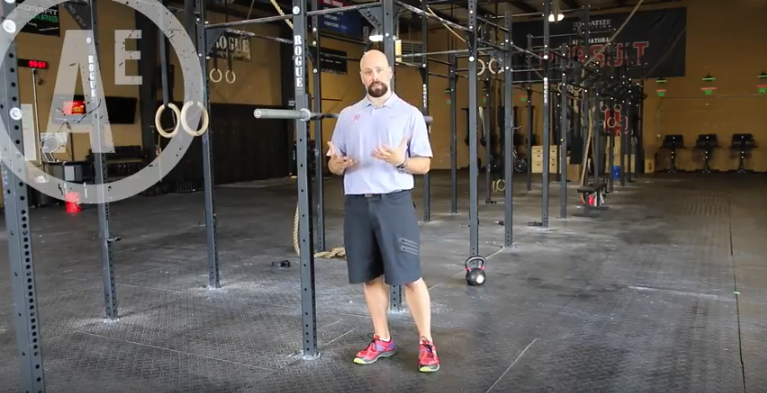Is Technique Limiting Your Performance?

Is Technique Limiting Your Performance?
This may seem like an obvious statement. However, proper form and technique should be the focus when introducing any new exercise or sports skill. I frequently take two or three treatment sessions to focus on proper form before adding any load beyond body weight or light resistance bands. It is vital to the continued improvement of neuromuscular control or movement skills before increasing weight. The majority of strength gains in the first two weeks of any exercise routines is due to neuromuscular adaptation. That means the brain and body learning how to more effectively communicate and activate certain muscles groups. It isn’t until four to eight weeks that strength gains begin to come from muscle growth or hypertrophy. This basic physiologic property helps emphasize the importance of mastering proper technique first with light load or even solely bodyweight before progressing to heavy loads.
However, we often see a significant difference between what many people acknowledge as proper technique and the technique they actually perform or even coach their athletes to perform. Most coaches and trainers can “tell” you what proper form is, but many are not capable of identifying technique errors. If they do identify a technique error, many are not knowledgeable enough to understand why they are seeing it. Furthermore, they don’t understand how to systematically go about correcting it. It is important to know the joint and muscular actions involved in the complex execution of specific movements. Not to mention, realizing that technique can be dictated or affected by your unique anatomical structure. There is no such thing as a “one size fits all” approach when it comes to coaching proper technique.
Technique, Technique, Technique
Despite hearing repeatedly from coaches, trainers, and clinicians preaching technique, the reality is many in the fields of health and fitness do not understand technique as well as they should. They may claim to practice or teach ‘perfect technique’ to their clients or patients. They almost always agree that technique is important. Furthermore, they usually agree that form should be part of the assessment. But are they actually making sure your technique is what works best for you to keep you injury free?
Take for example a CrossFit athlete that was recently seen at Elite Sport & Spine. Her primary complaint was low back pain following workouts involving squats, deadlifts, and power cleans. She had seen a physical therapist for her back pain and had been doing CrossFit for over two years. She had been receiving dry needling treatment for almost 8 weeks with no change. Despite dry needling treatments twice per week and performing a routine of abdominal strengthening exercises and hamstring stretches, she continued to have constant tightness and frequent pain in her low back.
Correcting Abdominal Breathing Errors
When a patient has seen another therapist without improvement, it often suggests an underlying movement or neuromuscular issue. As we further investigated her low back symptoms, the pattern and nature of her symptoms led me to the conclusion that something was clearly wrong with her technique.
She had plenty of core strength. Her hamstring flexibility was more than adequate. Plus, she looked pretty good doing a body weight squat. She no longer had pain and stiffness on a daily basis, but still experienced a lot of soreness for 2-3 days after WODs involving squats. Once we evaluated her loaded her squat, I saw were things went wrong. She stopped abdominal bracing the way she did with a body weight squat and switched to an extension/compression stabilizing technique using her low back muscles instead of her intra-abdominal pressure to stabilize the lumbar spine. Here’s more on the extension/compression strategy from our colleagues at Athlete Enhancement:
Once we corrected this technique error and got her breathing properly and stabilizing her lumbar spine during loaded squats, she immediately had zero pain following workouts.
Closing Thoughts
Nothing that I did with this CrossFitter was magical or secret knowledge. When someone is experiencing a weakness in their performance or is recovering from a musculoskeletal injury, far too frequently, most will only think to improve physical abilities (strength, mobility, endurance, etc.) when the issue is actually neuromuscular control or technique-related. While addressing physical abilities is important, they have a limited value without proper technique.
This is why many of the exercises we give are “corrective” exercises, not “strengthening” exercises. The goal is to correct technique and improve neuromuscular control, not necessarily increase physical abilities.
Injury rehabilitation programs that focus solely on physical abilities without integrating those newly developed abilities into specific movement tasks or sport-specific skills will fail to ensure that athletes are equipped to handle the demands of training and competition. When it comes to injury prevention and rehabilitation, failing to integrate strength with proper technique will increase the chance of recurring injury. This is often why people experience “a problem area” or have the same recurring injury because the underlying technique issue has never been addressed.
For example, the relationship between hamstring injuries and sprinting is well documented. Certain athletes seem to frequently experience hamstring injuries, which can take weeks or months to rehab. However, when efficient sprinting mechanics are coupled with development of the physical abilities that are sport-specific to sprinting, the chances of hamstring injuries are essentially nonexistent!
This is why experts are convinced several common athletic injuries, such as hamstring injuries and non-contact ACL tears among others, are almost entirely preventable. This also explains why having a coach, trainer, and/or therapist who understands technique is so important to athletes.
Schedule Your Initial Assessment Today
 262-373-9168
262-373-9168



